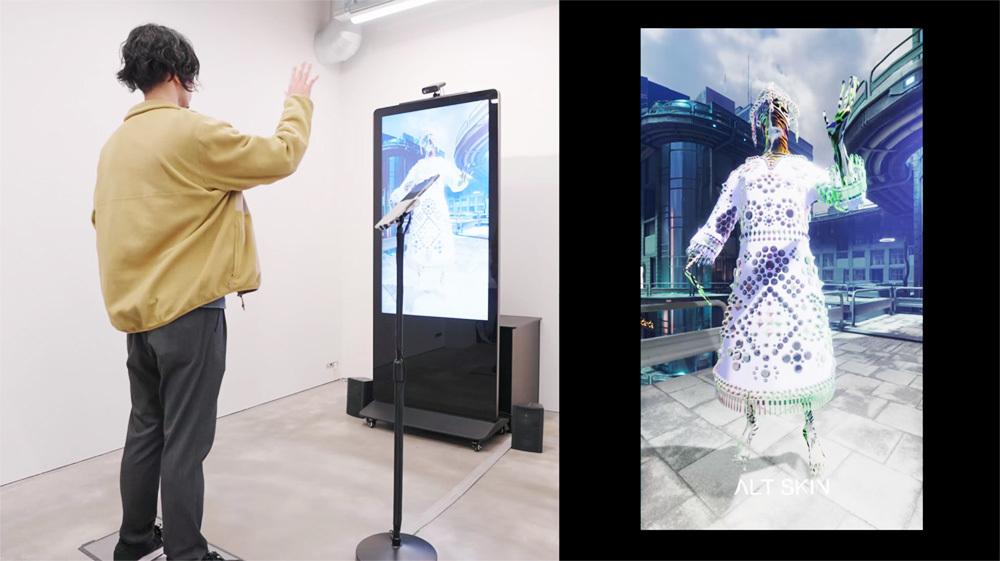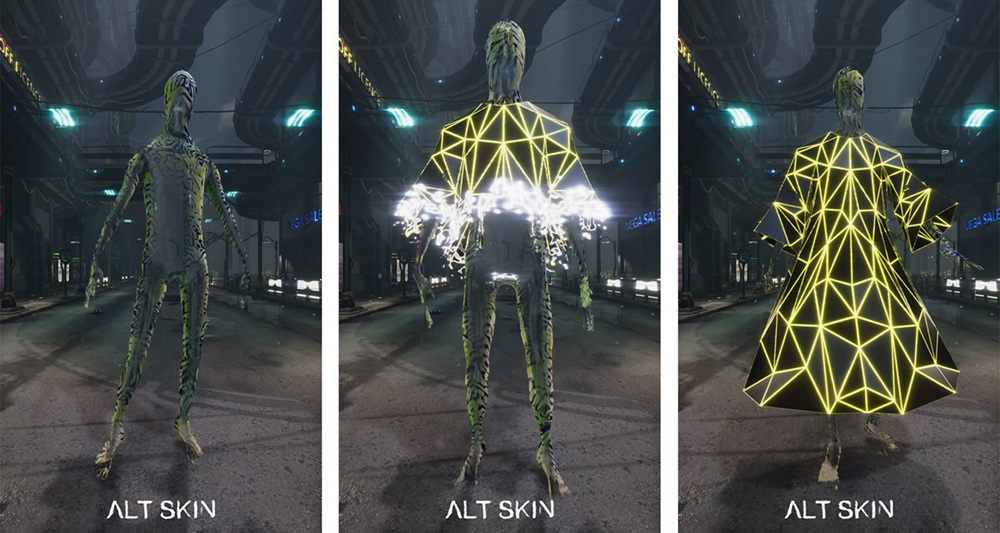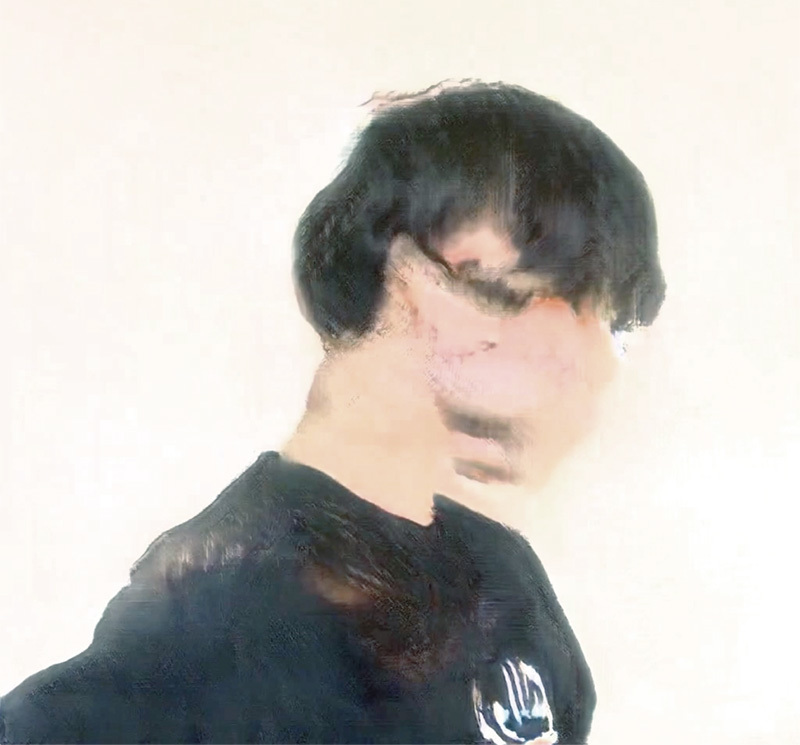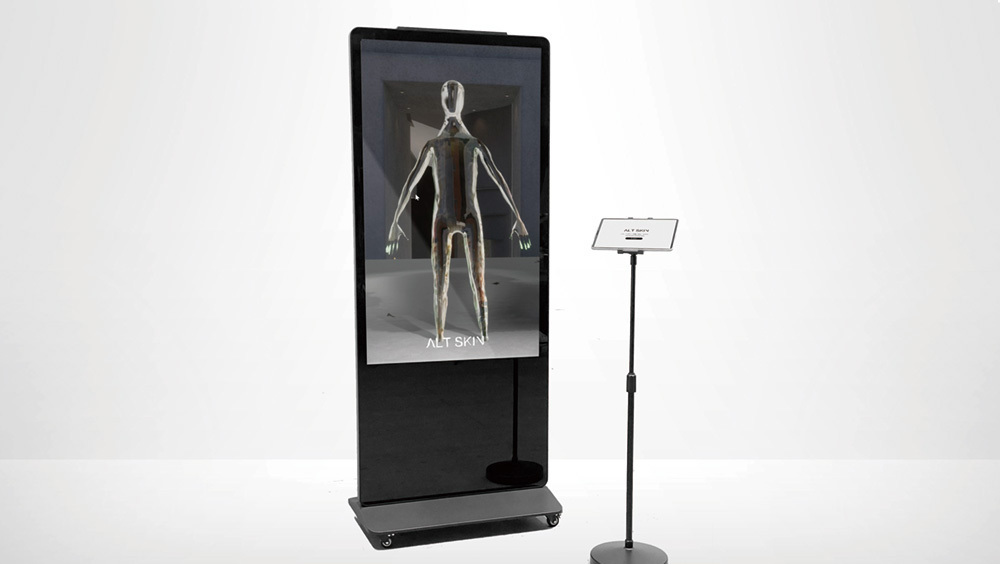How can Dentsu Inc.'s creative approach contribute to the ever-evolving field of CX (Customer Experience)?
To explore this potential, members of Dentsu Inc.'s CX specialist unit, the "CXCC" (Customer Experience Creative Center), share insights on CX and creativity in a series called "Monthly CX" ( For more on Monthly CX, click here ).
This time, we spoke with Yuma Kishi of Dentsu Lab Tokyo. He is involved in creative R&D (research and development) and, in his private life, is an up-and-coming creator producing works as an AI artist and collaborating with music artists.
Using the example of "ALT SKIN," a virtual try-on experience he worked on, we explored "Human Identity in the Metaverse."
[Yuma Kishi Profile]
Creative Technologist, Dentsu Inc. Lab Tokyo, Dentsu
During university and graduate school, he primarily researched machine learning in image processing. After graduation, influenced by his painter father, he began creating art that explores the interplay between AI and humans.
After joining Dentsu Inc., he has worked on visual communication using deep learning and creative production utilizing technology. Privately, he attends art school while also active as an AI artist.
Experiencing the "Seam Between Reality and Digital" Through Virtual Try-On
Monthly CX: What is the virtual try-on experience exhibition "ALT SKIN"?
Kishi: "ALT SKIN" is a program that generates a unique avatar for each user, allowing them to experience the virtual space "metaverse" by trying on virtual wear. We developed it jointly with Dentsu Craft Tokyo, a sister organization of Dentsu Lab Tokyo, upon request from Startburn Inc.
*Avatar = The user's "alter ego" within the virtual space. In "ALT SKIN," AI automatically generates the avatar.
Monthly CX: How does the experience work?
Kishi: First, you stand in front of the device and input "words that represent your personality and beliefs" into the tablet. The AI then generates your original avatar. Using this generated avatar, you can try on virtual wear from the fashion brand "ANREALAGE." If you like the virtual wear, you can also purchase it as an "NFT (non-fungible token)."
You can also see how your appearance changes in the virtual space when you move your body while wearing the virtual wear.

Avatar trying on virtual wear
Monthly CX: So your avatar is displayed on the device like a mirror, and you can try on virtual wear within that space. What was the goal behind this kind of interaction?
Kishi: One goal was to let users feel the "seam between reality and digital" by linking the real world with the digital.
The "metaverse," where we exist as avatars in virtual space, is undoubtedly evolving and will increasingly enter our lives. "ALT SKIN" was born from the desire to provide an opportunity for people unfamiliar with the metaverse or NFTs to deeply consider these concepts.
Fashion Diversity Expanding in the "Metaverse"
Monthly CX: How does the "digital fashion in the metaverse" presented as a theme by "ALT SKIN" differ from its real-world counterpart?
Kishi: Currently, luxury brands and major labels are rapidly entering the NFT space, and for now, "human-shaped" designs are fundamentally being adopted in the digital realm as well.
However, when "NFT-native" users who are comfortable with NFTs emerge in the future, it's unclear whether they will adopt humanoid avatars. We can expect the emergence of various avatar types, such as "animal-type" or "alien-type." Digital fashion will likely need to adapt to support these non-humanoid avatars as well.

Human-type avatars are currently standard in the metaverse
Monthly CX: It seems like it could become even more diverse than real-world fashion.
Kishi: For example, an avatar shaped like a jellyfish wouldn't have the concept of "arms." They might not even wear clothes at all. This way, fashion in the metaverse is deeply connected to "how the avatar is shaped."
Furthermore, the role of fashion in the metaverse will vary significantly depending on the nature of the platform itself. For instance, on platforms like FPS (first-person shooter) games where you play from the character's perspective, the player's field of view often includes their hands. In that case, fashion items like "gloves" might become highly valuable.
Monthly CX: I see. So gloves could become a staple item like sneakers are in the real world.
Kishi: Yes. Conversely, on platforms where the back of the head is always visible, we might see the emergence of head accessories specifically designed for "back-of-head decoration."
Monthly CX: So, depending on the platform adopted, new fashion trends could be pioneered.
Kishi: Fashion is one tool humans use to express their identity. How fashion will intertwine with self-expression in the metaverse—it's an exciting, fascinating area just to contemplate.
Does Inequality Give Birth to Identity? The Significance of the "Individual" in the Metaverse
Monthly CX: You mentioned fashion as a tool for expressing identity. What do you think identity means in the metaverse?
Kishi: I don't think one person necessarily has just one avatar. For example, their appearance might differ between day and night, or change hourly. I believe such "fluctuations" will occur in the metaverse. Rather than being bound to a single form, the ability to change diversely is a potential aspect of identity in the metaverse that I hope can be presented.
Furthermore, I believe people who struggle to move their bodies as they wish in the real world, or who have complexes about their appearance, will be able to freely express themselves in the metaverse.
Monthly CX: So you're suggesting the metaverse could liberate us from lookism?
Kishi: I think the problem of lookism could still arise in the metaverse.
With avatars that can change appearance more easily than in the real world, the pursuit of beauty could become more extreme, potentially creating different lookism challenges than those in the real world.

Texture variations of wearable items tried on within ALT SKIN
Monthly CX: Conversely, is there a possibility we could see a world of "identity homogenization," where everyone collectively adopts the same fashion or design because it's deemed "beautiful"?
Kishi: That remains to be seen, but I think it depends on how NFTs are used. NFTs are "technology that proves a piece of data has unique value." Digital data could be copied endlessly, making it hard to create value like physical objects in the real world. But NFTs emerged to prove uniqueness. In a sense, they arrived to create "inequality" within a world of unlimited copying and "ultra-equality."
Monthly CX: Indeed, if NFTs prove the uniqueness of digital fashion data, even in a virtual space where people can freely design their appearance, they're less likely to end up looking the same.
So NFTs have the effect of making the metaverse world unequal.
Kishi: It's just one perspective, but you could see it that way. We don't even know if equality is inherently good in the metaverse, and I don't think it's as simple as "inequality = bad."
For example, if more people start thinking, "I want to look like Person A," there could be a flood of avatars identical to Person A. In such a world, would identity even exist?
Monthly CX: When I experienced "ALT SKIN" this time, I felt a strong sense of "this is truly my alter ego" looking at the avatar on the screen. It wouldn't be pleasant to have so many other versions of that important alter ego existing besides myself.
In previous virtual spaces, purchasing paid items allowed avatars to assert their individuality. If NFTs guarantee the uniqueness of these items, would that make expressing identity easier than ever before?
Kishi: Yes. We still don't know exactly how identity will be expressed in the metaverse. The standards of beauty that exist in the real world may no longer apply there, and perhaps the concept of an "ideal image" will disappear.
In such a world, we need to consider questions like "What constitutes 'limitations' in the metaverse?" and "Who will create them, and how?"
Monthly CX: So, the nature of identity in the metaverse will be significantly influenced by how restrictions like NFTs are set within it.
Is technology good or evil? Continuously questioning modern society through cutting-edge technology
Monthly CX: Could similar problems to those in today's online society arise within the metaverse?
Kishi: Yes. For example, there's currently a tendency to prioritize evaluations based on social media metrics—to the extent that having more followers can sometimes be advantageous during job hunting. If that evaluation axis is applied to the metaverse, the emphasis on "likes" and follower counts might accelerate even further within the metaverse.
In the metaverse, people might receive passing evaluations like "GOOD" or "BAD" on their appearance or fashion choices. If a purchase button were implemented, you could buy the clothes someone wearing them. While this might seem like a convenient feature, it would create a world where you constantly have to be conscious of others' evaluations.
Monthly CX: It could become a world where you constantly worry about the "like count" displayed on your body, never getting a moment's peace.
Kishi: Some people might enjoy evaluating each other, while others would want to avoid it. Such differences in values could potentially cause divisions within the metaverse.
Monthly CX: So right now, it's still a state where various possibilities exist—whether this new world will be good for its users or not.
Kishi: Yes, precisely because of that, I want to keep creating questions through new technologies like the metaverse, AI, and NFTs: "What should humans value?" "What is individuality?" "What is happiness?"
(Editor's Note)
In Monthly CX Issue 5, we spoke with Mr. Kishi, who creates diverse creative works utilizing cutting-edge technology, about how the evolution and proliferation of the metaverse and NFTs could bring significant changes to fashion. His discussion on how new technologies can influence human identity and values was truly stimulating.
This interview was conducted in collaboration with 'CX Creative Studio note' ( click here for details on CX Creative Studio note ). We are also working with Dentsu Digital Inc.'s CX Creative Team, not just the Dentsu CXCC team, to gather and introduce a broader range of case studies. If you're interested, please check that out as well.
If you have any requests for future topics or case studies, please send a message to the Monthly CX Editorial Department via the contact page below. Thank you for your continued readership.

Monthly CX Editorial Department
Dentsu Inc. CXCC: Koike, Oda, Takakusaki, Kanasaka, Okumura













